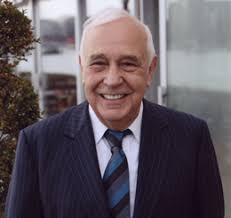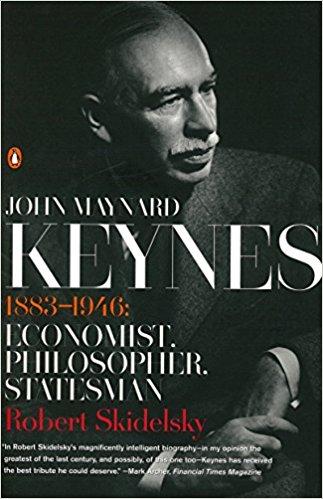John Maynard Keynes Summary
4 min read ⌚
 1883 – 1946: Economist, Philosopher, Statesman
1883 – 1946: Economist, Philosopher, Statesman
Who was John Maynard Keynes and what is his place in our world’s history?
Our summary of “John Maynard Keynes” presents you the biography of one of the 20th century’s most important financial figures.
Who Should Read “John Maynard Keynes”? and Why?
This book is an abridgment of the three-volume biography of John Maynard Keynes, by author Robert Skidelsky. We must say, it is a magnificent work.
Skidelsky pains an image of Keynes not only as an economist, but as a statesman and philosopher as well. He does not separate one from the other, and shows them how they work together in creating his whole personality.
We believe that “John Maynard Keynes” is a great read for all readers interested in the events that marked the 20th century.
About Robert Skidelsky
 Robert Skidelsky is the author of a three-volume biography of Keynes, a critically acclaimed piece.
Robert Skidelsky is the author of a three-volume biography of Keynes, a critically acclaimed piece.
“John Maynard Keynes Summary”
John Maynard Keynes (1883) was the first born child of Florence Ada Brown and John Neville Keynes.
His father was an independent man who had transformed a brush-production firm into a prosperous manufacturing business and after that made a fortune in flowers. His mother was a daughter of a nonconformist academic clergyman, who met his father while he was lecturing and married him in 1882.
John Maynard had a younger brother and sister, but his parents favored him.
During his childhood, John Maynard partook in discussions with his dad’s knowledgeable acquaintances and showed a talent for mathematics and logic. Indeed, as time went by, he excelled in math and took an interest in sports as well, at which he neither exceeded expectations nor performed inauspiciously.
In 1902, he took the Cambridge Higher Certificate examination and, despite the fact that he had not prepared up for it, he ended up on top of the list of examinees.
Then, he went at Cambridge and became a member of the Cambridge Union, which was a debating society. He often spoke on politics, even as a freshman.
Amid his first year, he was welcome to join the Cambridge Conversazione Society, otherwise called the Apostles.
This was the most elite of Cambridge’s secret societies. The members were smart, unworldly, withdrawn, pompous, relatively incapable of casual chitchat, inconsistent and not charming at all.
Among them, Keynes’ dearest companion was Lytton Strachey, who had a developmental influence on him.
Keynes and Strachey saw their homosexuality as the establishment of a code of morals they called “higher sodomy.”
They thought ladies to be physically and rationally the second rate and saw their male countrymen as sexually and morally preferable.
Being a part of the Bloomsbury Circle’s intellectual and aesthetic avantgarde, Keynes had various relationships and some casual meetings with other men, in particular with painter Duncan Grant.
Be that as it may, in 1918 he met ballet dancer Lydia Lopokova.
The affair they had developed, and in 1923 he acquainted her with his parents and asked her to marry him.
Their marriage ended on Easter Sunday, April 21, 1946, when Keynes passed on with Lydia at his bedside.
Key Lessons from “John Maynard Keynes”
1. Economics, Diplomacy, and Philosophy
2. The 1920s
3. Keynes’s influence
Economics, Diplomacy, and Philosophy
Keynes started lecturing on economics at Cambridge in 1911 and took a profound interest in the financial issues of the school.
In 1912, he made a contract to compose a book on Indian monetary affairs. Indian Currency and Finance, which he published in 1913.
In 1914, shortly before England entered into war with Germany, the Treasury looked for Keynes’ assistance settling a financial emergency.
Keynes scrutinized the administration’s lavish, tax-subsidized rescue of London firms.
He had argued that the institutions should be required to hold those debts for the length of the war, which was expected to be somewhat short.
This counsel was in opposition to his financial interest since he and his dad had investments whose value would have plummeted if the legislature had not taken care of the debts.
In 1915, Keynes was introduced as a Treasury official. Soon after, he took an interest in the first conference to sort out war credits among the Allies.
By chance, in 1916, Keynes asked for an exception from the military obligation on the grounds of conscientious protest.
Given that his Treasury posting exempted him, the question remains: for what reason did he do this?
Some think that he thought about leaving his post at the Treasury.
In any case, he soon got busy with attempting to save Britain from another financial crisis.
The 1920s
Amid the 1920s, Keynes filled in as a financial consultant, corporate executive, and journalist. He profited and for a period was a collector of fine art.
In 1921, he published his Treatise on Probability, talking about the significance of rational conduct under uncertain conditions.
In his 1923 book A Tract on Monetary Reform, Keynes compressed his contemplations about the “theory, practice and objects of monetary policy.”
In 1924 Keynes started the Treatise on Money.
He noticed that since banks made money, just the Bank of England could get even out investments and savings in the U.K.
In any case, the gold standard made it unthinkable for the bank to alter interest rates to match savings.
England endured enormous levels of unemployment. Keynes demonstrated how depression came about when expected profits were not as high as the market rate of interest.
He appeared to be prophetic after the 1929 Wall Street crash.
Keynes’s Influence
Keynes’s most significant work, The General Theory of Employment, Interest, and Money, started to develop a progression of lectures he gave in 1932.
By 1934, he was lecturing from the book’s proofs.
Keynes’ ensuing influence on monetary policy amid the ’30s and ’40s is relatively difficult to overstate. He was, apparently, vital in the plan of the postwar financial architecture laid out at Bretton Woods.
The fall of that architecture in the 1970s may even have been unsurprising when looking at the principles illustrated in some of Keynes’ initial writings on the gold standard.
Like this summary? We’d Like to invite you to download our free 12 min app, for more amazing summaries and audiobooks.

Our Critical Review
He sets Keynes in the context of his time and circumstances. Skidelsky is unsparing in his treatment of the inconsistencies and contradictions in Keynes’ life and character, but he is fair and balanced; he avoids sensationalism even in the treatment of the sensational.
Emir is the Head of Marketing at 12min. In his spare time, he loves to meditate and play soccer.


 1883 – 1946: Economist, Philosopher, Statesman
1883 – 1946: Economist, Philosopher, Statesman



